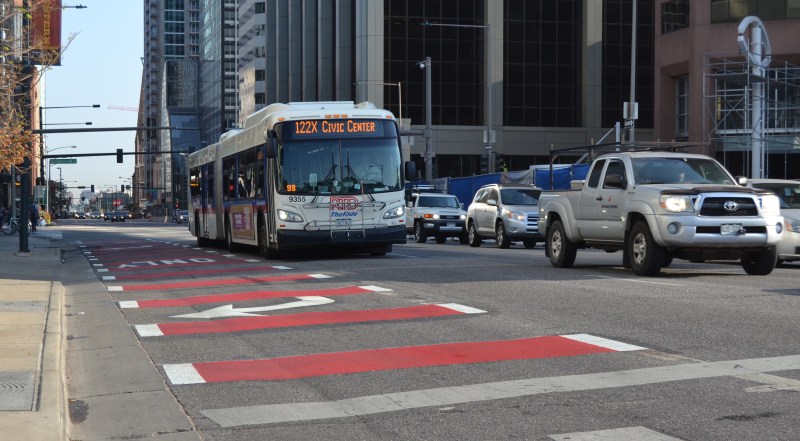RTD’s Driver Shortage Is Getting Worse, and It’s Untenable
Service cuts possible as RTD continues to struggle with new hires.

People riding RTD buses and trains are not getting where they need to go on time — if at all — because RTD does not have enough drivers to take them there.
As Streetsblog reported in September, the underfunded transit agency cannot hire and retain enough people to drive all of its scheduled routes.
The problem is getting worse. August saw 775 hours worth of bus runs that should’ve happened but didn’t, RTD documents show. That figure doubled in September. October saw 1,105 lost hours — a 67 percent increase over the same month last year.
While RTD still delivers about 99 percent of its promised service, that’s not good enough, said Bruce Abel, assistant general manager of bus operations.
“Statistically it looks okay, but when you’re Mrs. Smith stranded at the corner of 8th and Oak and your bus doesn’t come by, it doesn’t look okay,” Abel said during an RTD Board of Directors meeting Tuesday.
The agency is short 127 bus drivers and 47 train operators.
RTD has tried drawing in more drivers with more money over the last year-and-a-half: a $1-per-hour raise, a $2-per-hour bonus for drivers who work two nonconsecutive shifts in one day, a $2,000 signing bonus, and a $1,000 bonus for drivers who refer new employees.
But these incentives haven’t changed the bottom line. Driving a bus or a train is apparently not all that attractive in a metro Denver job market where only 2.2 percent of residents are unemployed.
The result is RTD drivers working on their days off to try an satisfy the bus schedules, making the job even less desirable.
“When you get behind in terms of head count, then you must mandate more employees,” Abel said. “As employees get mandated, they find it less appealing, so they will leave, which means that your head count shortage is exacerbated, and so it becomes a vicious spiral.”
About 10 percent of daily bus runs are covered by drivers working overtime.
“We need to pay these people more money,” District K Director Paul Solano said.
Legal weed could also deter applicants, Abel said. Drivers must get drug tested under federal law, and he suspects that’s a disincentive.
Service cuts are on the table, Abel said, though he called that possibility “right-sizing.”
Getting to a Broncos game vs. getting to work
Hauling people to and from Mile High Stadium with the BroncosRide service on a Sunday night can mean problems for commuters come Monday morning. Lost service hours spike at the start of the National Football League season and when the Broncos play home games, RTD documents show. The system gets stretched thin from the surge in demand, thinning out the Monday workforce.
Broncos games are not the problem — everyone should be able to take transit when and where they need to. But RTD is facing a budget crunch on top of the driver shortage, and the FasTracks expansion approved in 2004 is not even complete. Meanwhile state lawmakers may or may not restore $6 million in annual revenue lost to a typo.
Without any additional funding, something’s gotta give.
District I Director Judy Lubow said shifting service from the BroncosRide to commuter routes is “definitely worth a discussion.” At the same time, a packed bus is a more productive use of money than a half-empty one.
“Our mission is to move people, not vehicles,” Abel said.


